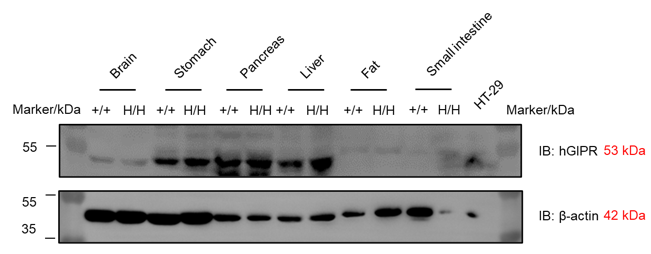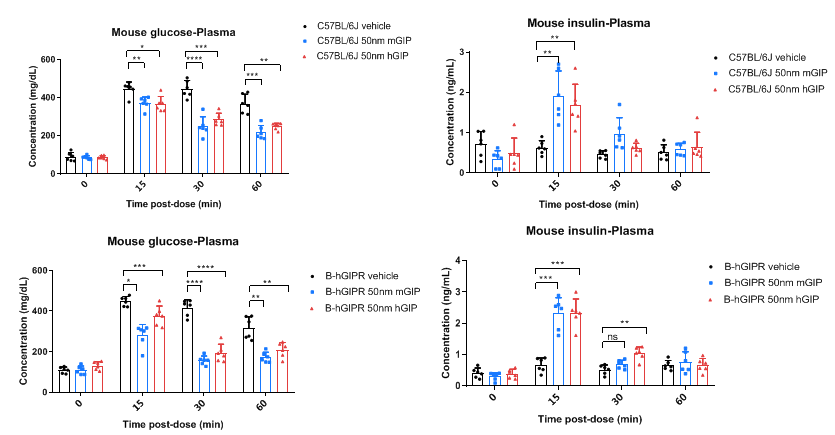


C57BL/6-Giprtm2(GIPR)Bcgen/Bcgen • 112714
| Product name | B-hGIPR mice |
|---|---|
| Catalog number | 112714 |
| Strain name | C57BL/6-Giprtm2(GIPR)Bcgen/Bcgen |
| Strain background | C57BL/6 |
| Aliases | PGQTL2 |
GIPR, gastric Inhibitory polypeptide receptor, belongs to G-protein coupled receptor family. GIPR is expressed in many tissues including pancreas, stomach, brain, liver, etc. This protein plays a crucial role in regulating insulin secretion, glucose and lipid metabolism. Mutations or changes within this gene have been associated with various health conditions including obesity and diabetes.
Biocytogen developed a GIPR humanized mice, the full coding sequences of human GIPR gene plus 3’UTR was inserted into the mouse Gipr in-situ. Then, confirmed that human GIPR mRNA was detectable only in homozygous B-hGIPR mice but not in wild-type mice. GIPR protein was detected in brain, stomach, pancreas and liver of homozygous B-hGIPR mice. During the IGPTT, human GIP induced the plasma insulin secretion and inhibit the glucose secretion.
The mice can be used for preclinical pharmacodynamics studies of target-related disease.
Gene targeting strategy for B-hGIPR mice. The full coding region sequences of mouse Gipr gene were replaced by human GIPR CDS + 3’UTR in B-hGIPR mice. As a result, mouse Gipr sequences will be deleted, and only human GIPR will be expressed in B-hGIPR mice.




In vivo function of m/hGIP during IGPTT. Plasma glucose and insulin concentrations were measured after intraperitoneal injection of 50 nmol/kg mouse GIP (Cat. HY-P77948, MCE) or human GIP (Cat. HY-P0276, MCE) and glucose (40%) in wild-type C57BL/6J mice and B-hGIPR mice (male, 6-week-old, n=6). Data represent means ± SEM. Analyzed by 2way-ANOVA,*P<0.05, **P<0.01, ***P<0.001